Check out our selection of 12 purple leaf houseplants, ideal for bringing color to your indoor space. These plants, featuring green and purple leaves, are great for those looking to add a touch of variety to their home or office.
Our guide covers a range of plants suitable for different care levels, from low-maintenance options for beginners to plants that require more attention, fit for experienced gardeners.
Find the perfect plant to match your indoor gardening needs and style.
Table of Contents
1. Purple Shamrock (Oxalis triangularis)
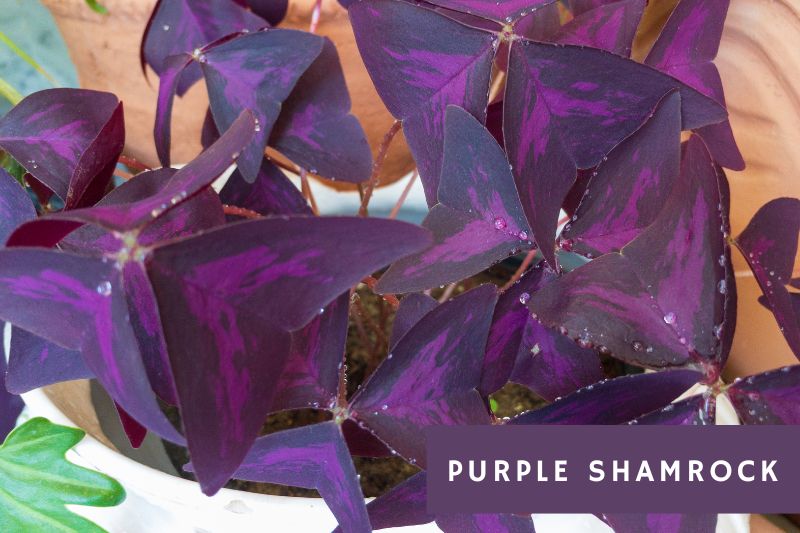
The Purple Shamrock is loved for its purple, triangular leaves that respond to light changes. It’s very resilient, easily reviving from bulbs after neglect. Adaptable to various lighting conditions, this purple bud is a practical choice for different indoor settings.
Key Points:
- Light adaptation: Thrives in varying light conditions.
- Resilient: Recovers well from neglect. Also known as the Heirloom plant, some varieties can live up to more than 100 years. 1
- Unique shape: Triangular leaves that look like butterflies.
Learn More:
Check out our Oxalis triangularis guide for simple, effective care tips.
2. Wandering Dude (Tradescantia zebrina)
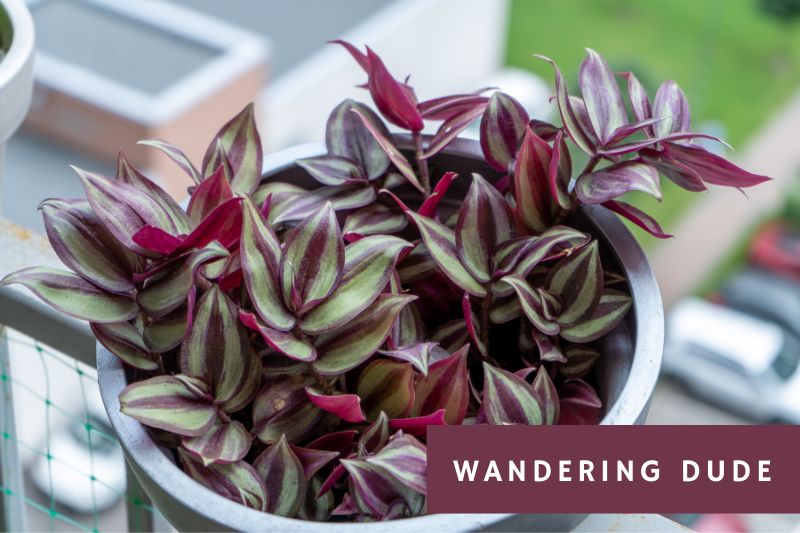
The Wandering Dude is recognized for its purple-striped leaves, ideal for hanging baskets. It grows quickly and can be easily propagated, making it suitable for those who enjoy seeing rapid growth. This plant does well both indoors and outdoors.
Key Points:
- Fast growth: Grows quickly, filling spaces. If you plant it outside, keep in mind that this purple plant is also an invasive species in some areas. 2
- Simple propagation: Easy for beginners.
- Distinctive look: Purple stripes on leaves are lovely.
3. Rose Painted Calathea (Goeppertia roseopicta ‘Dottie’)
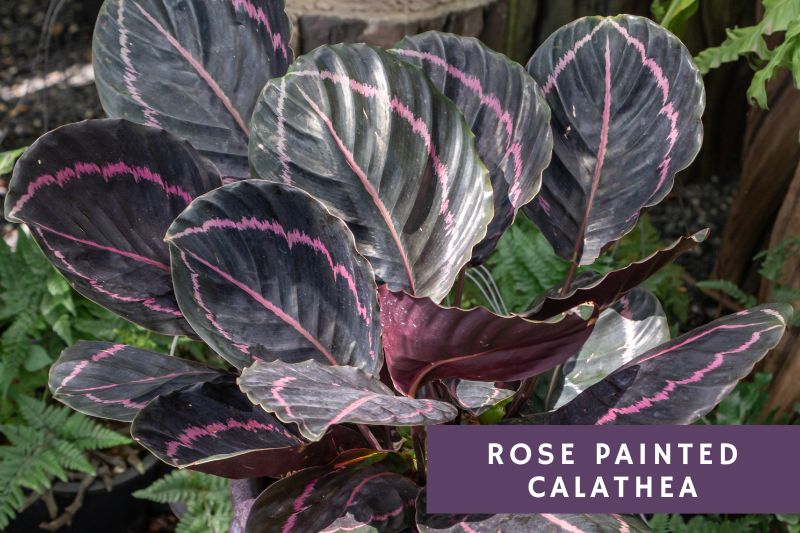
The Rose Painted Calathea has large, dark-purple leaves with pink highlights. It needs specific humidity and light conditions, making it a fit for someone who enjoys caring for fussy plants.
Key Points:
- Patterned leaves: Pink accents on dark purple.
- Prefers humidity: Ideal for a humid indoor environment.
- Attention needed: Suitable for those who enjoy drama queens.
Learn More:
Why the Calathea group is ready to throw a tantrum, their unique appearances make the time spend caring for them worth it! Check out our list of Calathea varieties for more inspiration!
4. Coleus (Solenostemon scutellarioides)
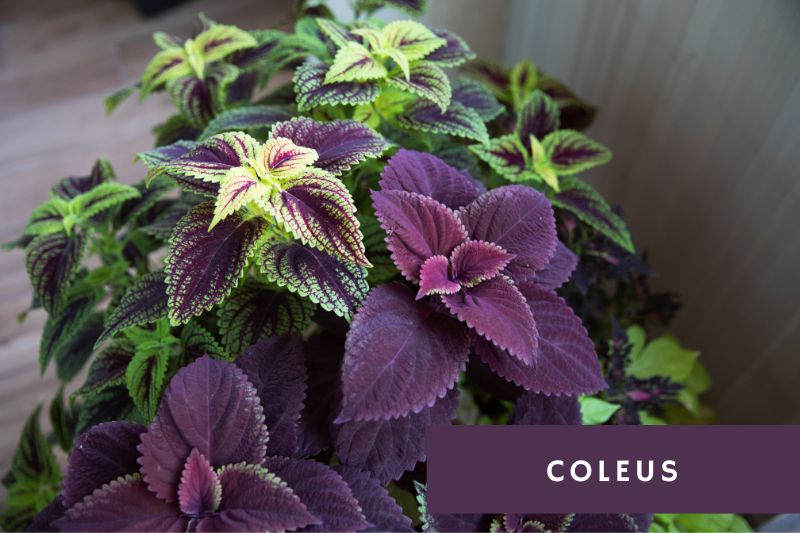
Coleus is known for its range of colors and patterns, including purple. It can thrive in various environments and is easy to propagate. It’s a good choice for adding color to indoor spaces without much effort.
Key Points:
- Color variety: Offers a range of patterns.
- Grows in many conditions: While usually grown outdoors, it adapts well to indoor settings.
- Easy to propagate: Simple for most gardeners.
5. Begonias
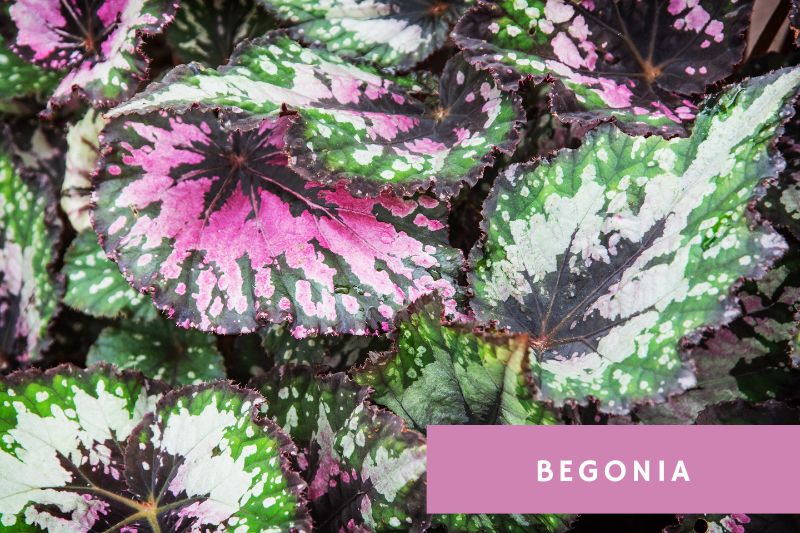
Begonias with purple foliage are known for their large, attractive leaves. They require well-draining soil and moderate light, making them a perfect choice for indoor gardeners on the lookout for plants with decorative leaves.
Key Points:
- Attractive leaves: Large and colorful. However, while some varieties are loved for their leaves, others are grown for their beautiful flowers.
- Moderate care: Needs well-draining soil and regular watering.
- Indoor fit: Good for enhancing indoor spaces with natural colors.
6. Sand Rose (Anacampseros Rufescens)
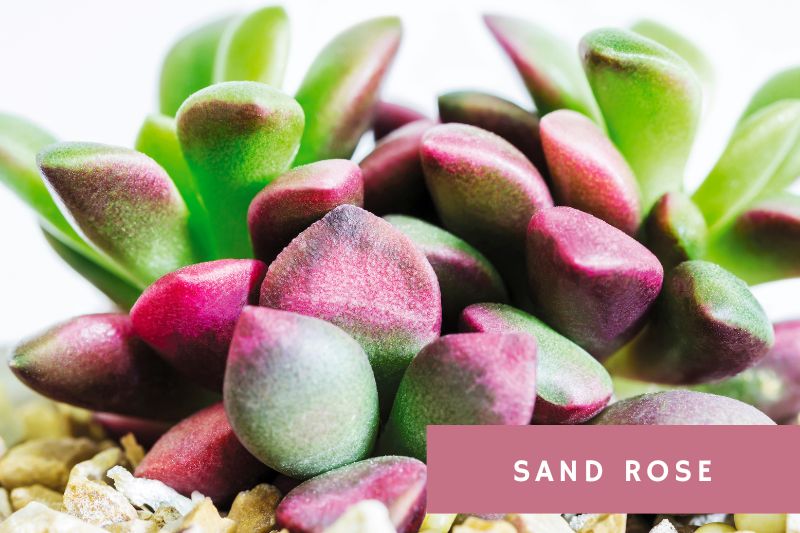
The Sand Rose is a slow-growing succulent that comes with green-purple leaves, which can turn red under sufficient sunlight. It’s easy to care for, thriving both indoors and outdoors in warmer months, but is not cold-hardy.
Key Points:
- Sunlight reactive: Changes color with sunlight exposure.
- Easy maintenance: Suitable for both indoor and outdoor settings.
- Succulent choice: Good for those interested in low-maintenance plants.
7. Persian Shield (Strobilanthes dyerianus)
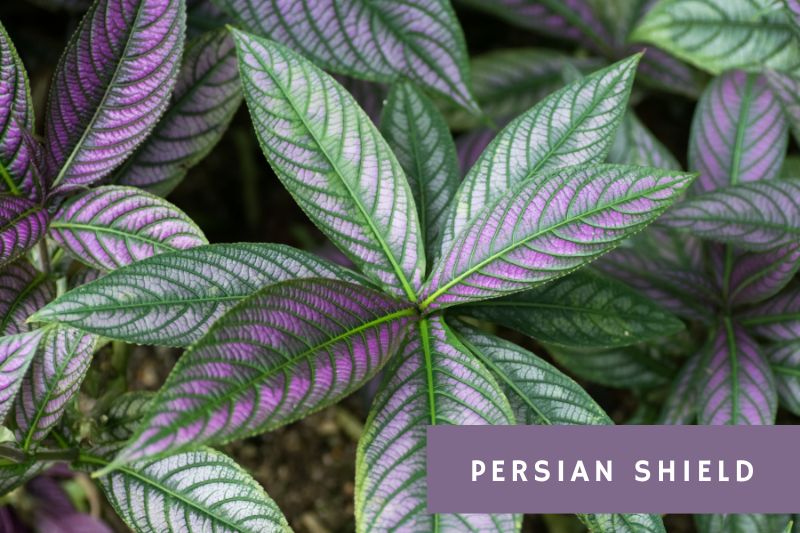
The Persian Shield is known for its iridescent purple leaves, providing a lovely contrast with its green foliage. It prefers hot, humid conditions and might require more care as it ages.
Key Points:
- Iridescent leaves: Offers a unique visual appeal.
- Prefers heat and humidity: Ideal for warm, indoor environments.
- Care requirements: May need more attention over time.
8. Purple Basil (Ocimum basilicum L.)
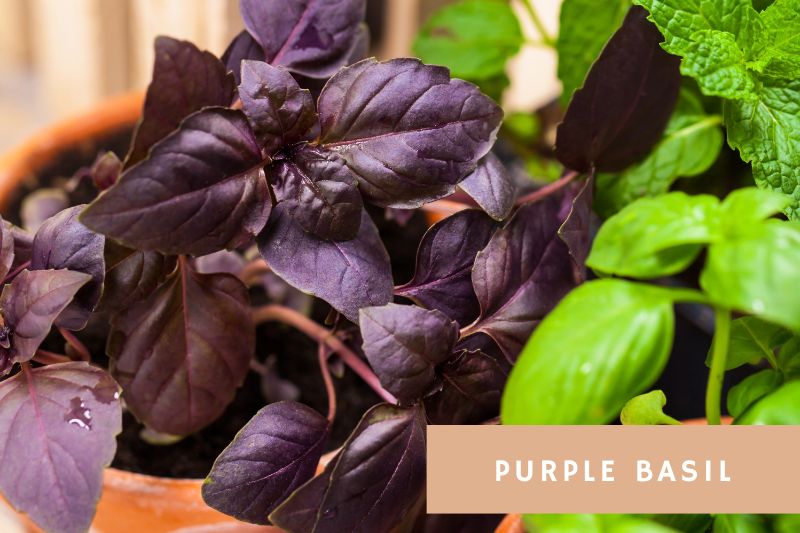
Purple Basil offers a stronger scent than green basil. It grows easily with sufficient sunlight and regular watering, making it perfect for those who like to grow their own herbs.
Key Points:
- Fragrant and tasty: Enhances dishes with flavor and aroma.
- Sun-loving: Thrives in sunny spots.
- Simple cultivation: Easy to grow.
9. Purple Heart (Tradescantia pallida ‘Purpurea’)
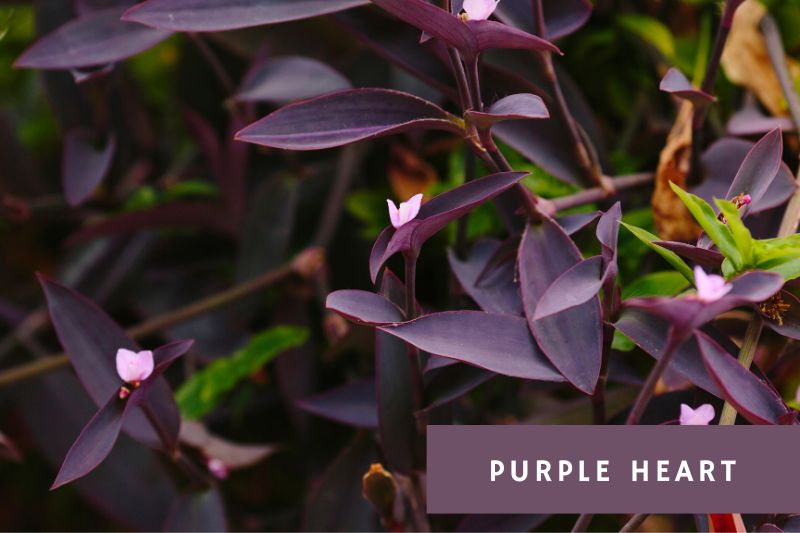
Known for its full purple foliage, the Purple Heart is easy to grow and suitable for hanging pots or as a ground cover. It’s also somewhat invasive, so it’s best for those who can manage its spreading nature.
Key Points:
- Vibrant foliage: Purple leaves add color to gardens.
- Quick growth: Fast-spreading, good as ground cover.
- Flexible placement: Works in pots or in the ground.
10. Purple Passion (Gynura aurantiaca)
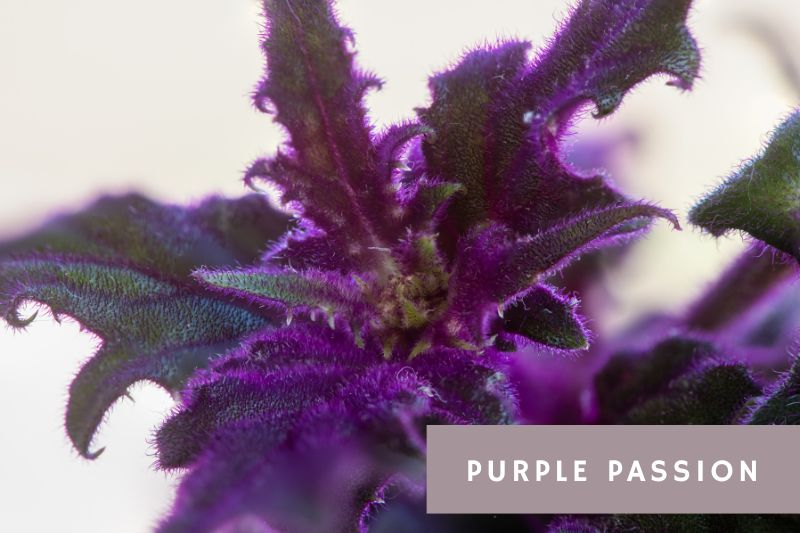
Purple Passion is known for its velvety, purple-hued leaves. It prefers bright, indirect light and moist, well-drained soil. Ideal for adding a touch of texture to indoor spaces. While its monocarpic nature sets it apart from the other purple leaf houseplants from this list, you’ll still have plenty of years of lovely foliage before the blooming starts.
Key Points:
- Unique texture: Soft, velvety leaves create a tactile experience.
- Specific needs: Prefers bright, indirect light and moist soil.
- Monocarpic plant: The flowering phase marks its decline.
Learn More:
Check out our Purple Passion guide for simple, effective care tips.
11. Echeveria ‘Perle von Nürnberg’
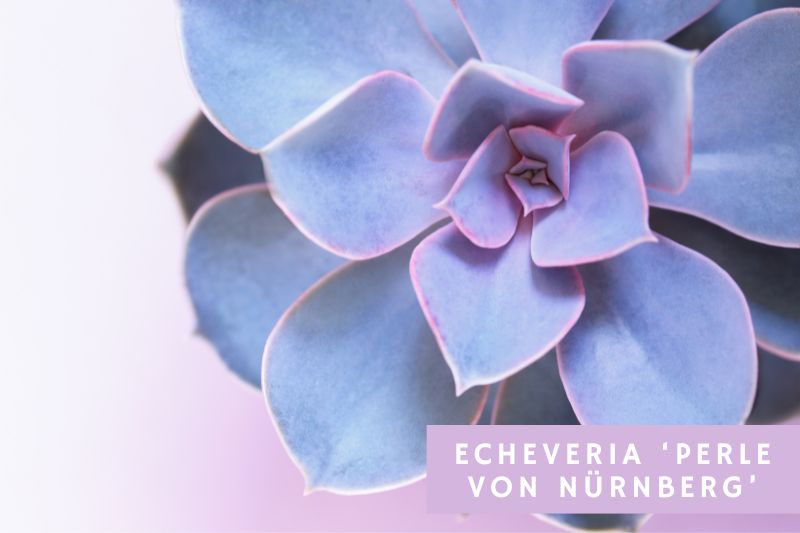
Echeveria ‘Perle von Nürnberg’ is has a rosette shape and purple-edged leaves. It’s hardier than other Echeverias and blooms in summer with pink flowers. Suitable for both indoor and outdoor settings in warmer climates.
Key Points:
- Distinctive shape: Rosette form adds elegance.
- Summer bloomer: Produces pink flowers in warmer months.
- Resilient: More robust than other succulents.
12. Never-Never Plant (Stromanthe Thalia ‘Triostar’)
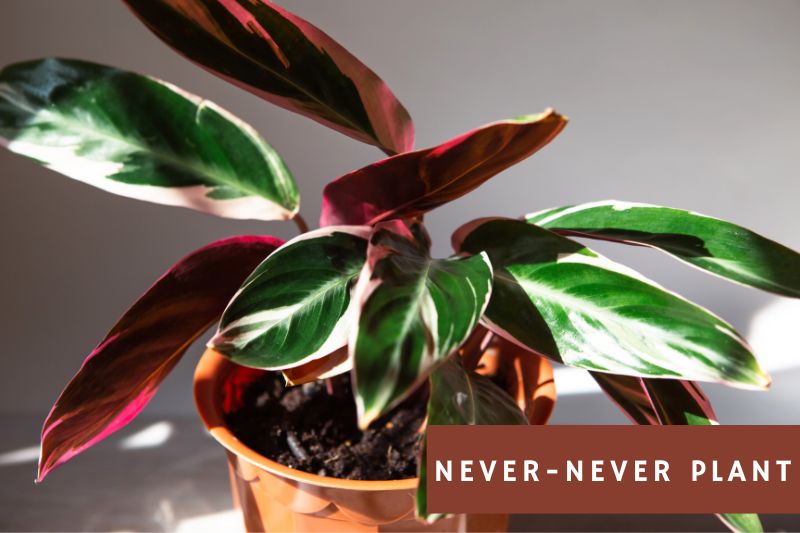
The Never-Never Plant, with its blend of pink, cream, magenta, and green leaves, is well-suited for adding color to indoor spaces. It thrives in medium to bright indirect light and prefers a humid environment.
Key Points:
- Colorful leaves: Variegated for visual interest.
- Light and humidity needs: Prefers indirect light and humidity.
- Indoor suitable: Good for enhancing indoor spaces with color.
Learn More:
The number of Stromanthe varieties fit for indoor cultivation is quite small, but all of these varieties are equally stunning!
Conclusion
That’s our roundup of purple and green leaf houseplants, perfect for adding life and color to any indoor space. From predominantly purple varieties to those with a mix of green and purple, there’s something for every preference.
Interested in exploring more? Check out our articles on plants with black leaves for a goth touch, or explore the world of red and green leaf houseplants for a warmer feel. We also have a selection of pink-leafed plants if you’re looking for something softer. Each guide is packed with useful information to help you broaden your indoor garden’s range of colors.
Whether you’re set on adding purple leaf houseplants to your collection or just starting to explore different plant colors, we’re here to support your indoor gardening adventures.
- References:
“Irish shamrock from family gift generations ago still surviving.” CBC News, Accessed November 28, 2023. https://www.cbc.ca/news/canada/ottawa/irish-st-patrick-shamrock-family-gift-generations-still-surviving-1.5951890 ↩︎ - References:
“110354.” CABI Compendium, CABI International. Accessed November 28, 2023. https://www.cabidigitallibrary.org/doi/10.1079/cabicompendium.110354 ↩︎

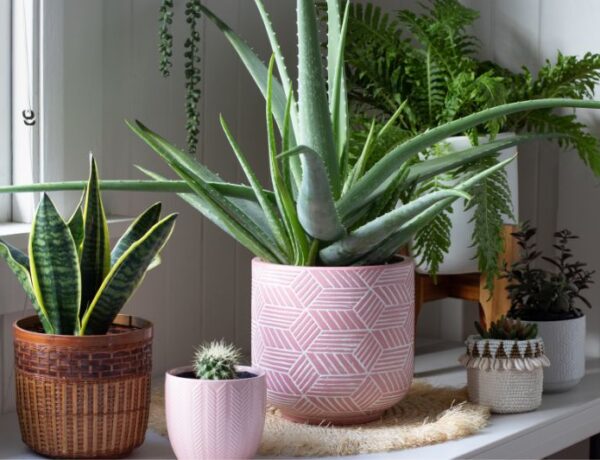
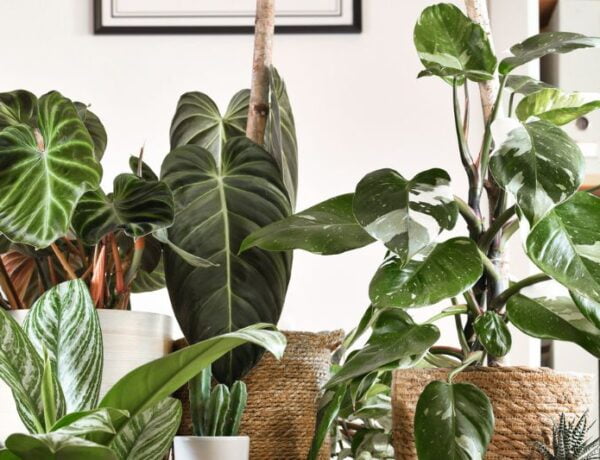
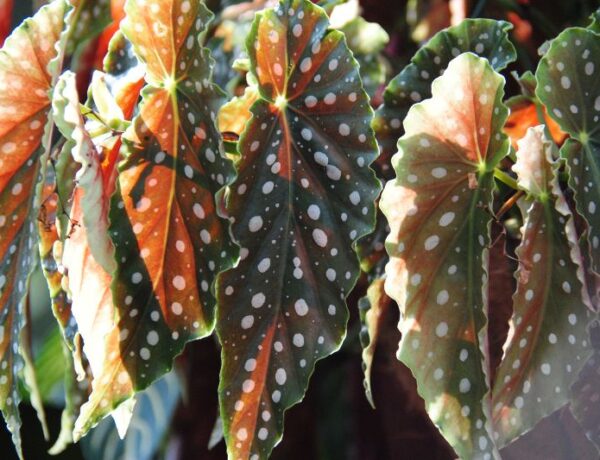


No Comments